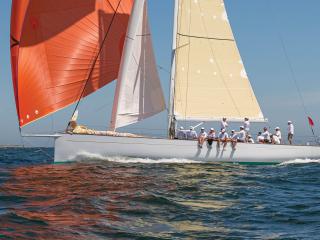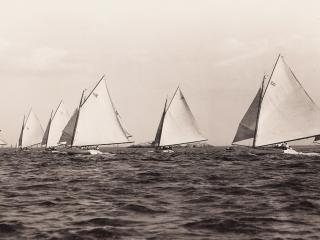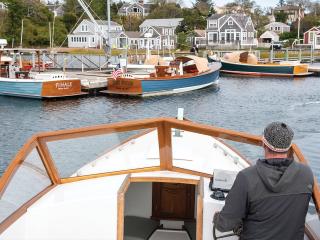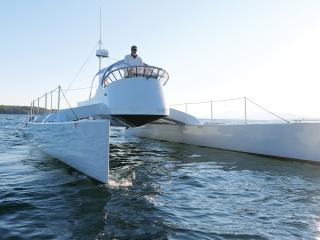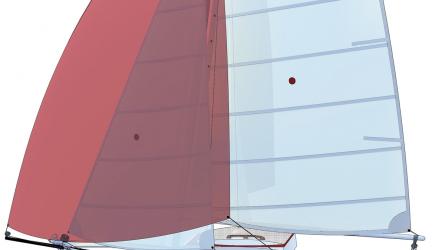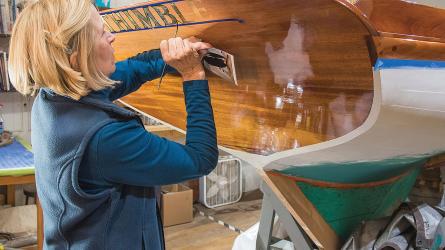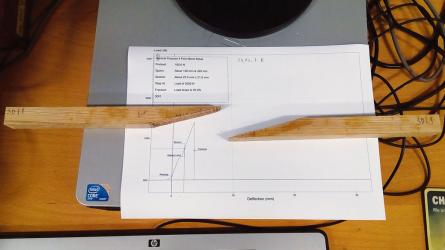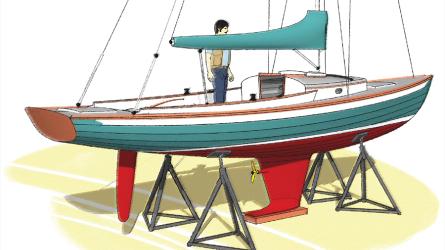March / April 2021
Spray Rails
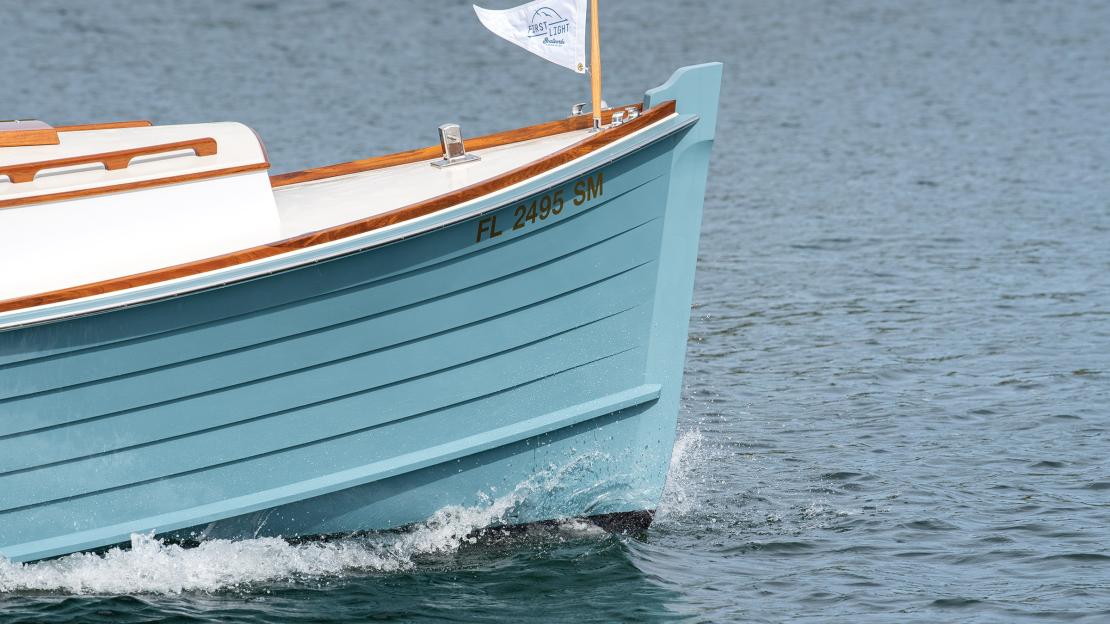
For its powerboats, including the Pocasset model shown here, First Light Boatworks of Cape Cod, Massachusetts (see article, page 72), builds spray rails that are wide, well-shaped, and complementary to the hull forms.
Spray rails, or spray knockers as they are sometimes called, have been around at least since the late 1930s and probably before that. As lightweight and powerful gasoline engines increased the speed capabilities of small boats over the threshold of about 10 knots, some form of spray control became desirable. The reasons for this were twofold: First, separating water from the hull surface reduces resistance; and, second, high speed is a lot more fun if you can see where you’re going and don’t get soaked while getting there.
Over the past 70 or 80 years, spray rails have been applied to almost every type of hull, from multihulls and ocean-racing sailboats to high-speed V-bottomed boats and traditional lobsterboats.
Spray rails are often confused with lifting strakes, which powerboat innovator C. Raymond Hunt originally called “deadrise angle compensators.” Lifting strakes do just what the name implies: their primary function is to aid in lifting the hull to a planing attitude, and their secondary effect is to direct water away from the hull surface. Typically, spray rails are above the boat’s at-rest waterline while lifting stakes are mostly below the waterline, where they do the most good in providing lift. Lifting strakes also impart some dynamic stability to the boat. Chine flats, which are horizontal breaks in the cross-sectional shape just inboard of the chines in V-bottomed boats, are usually above the waterline forward and below it aft. They combine the functions of spray rails and lifting strakes, adding lift and dynamic stability and at the same time deflecting wake and spray away from the topsides.
To read the rest of this article:
Click the button below to log into your Digital Issue Access account.
No digital access? Subscribe or upgrade to a WoodenBoat Digital Subscription and finish reading this article as well as every article we have published for the past 50-years.
ACCESS TO EXPERIENCE
2-for-1 Print & Digital Subscription Offer
For this holiday season, WoodenBoat is offering our best buy one, get one deal ever. Subscribe with a print & digital subscription for $42.95, and we’ll give you a FREE GIFT SUBSCRIPTION to share with someone special.
1 YEAR SUBSCRIPTION (6 ISSUES)
PLUS ACCESS TO MORE THAN 300 DIGITAL BACK ISSUES
PRINT+DIGITAL $42.95
Subscribe
To read articles from previous issues, you can purchase the issue at The WoodenBoat Store link below.
 Purchase this issue from
Purchase this issue from
